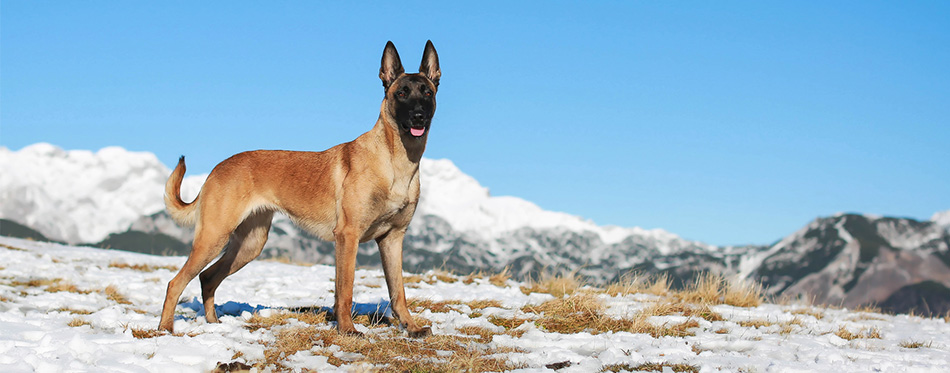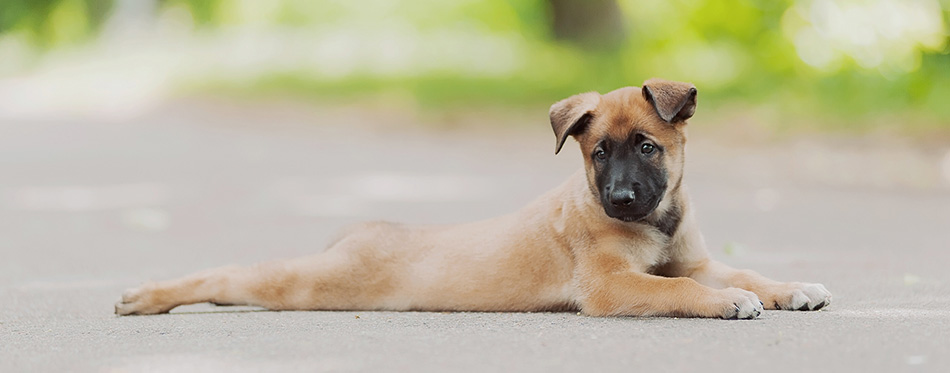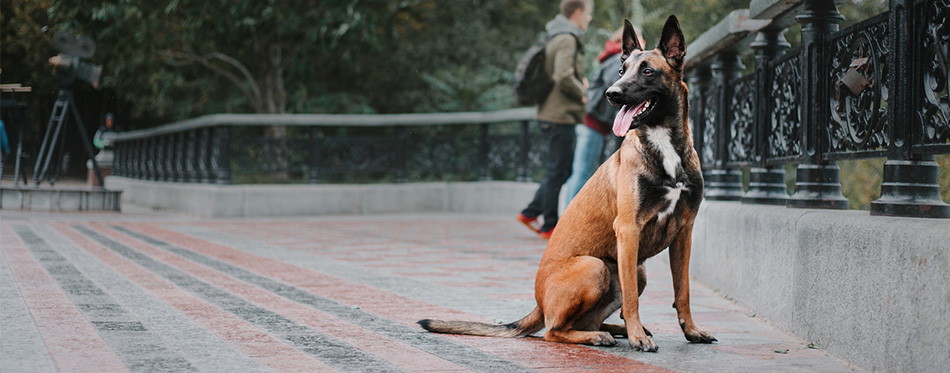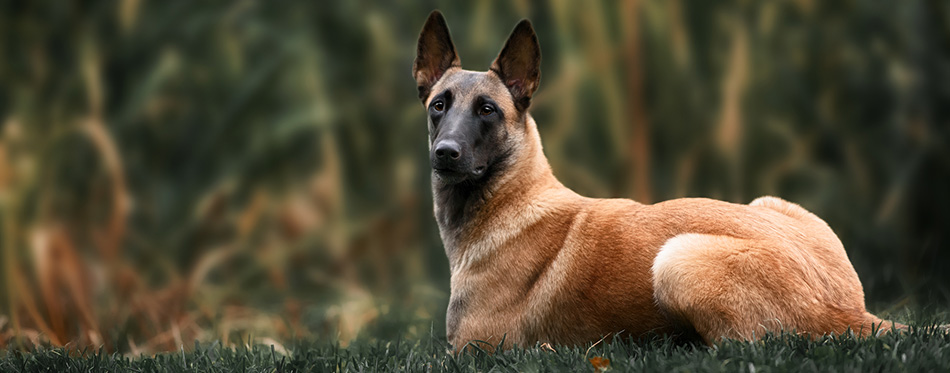Small dogs are cute, but can they protect you from a burglar? Can they charge towards your enemies so that they can’t go near you? While the odds of you having to go against your enemy are low, robbery isn’t. This is why Belgian Malinois are ideal protectors.
Think about the canines you see in the mall. Belgian Malinois breeds are the face of these canines since they exhibit the intelligence and character needed for a guard dog. While they are not the cutest of dogs, they are more than what meets the eye.

History of the Belgian Malinois
Belgian Malinois comes from a line of Belgian Sheepdogs. In fact, the Belgian Sheepdog has four varieties, namely, Tervuren, Laekenois, Groenendael, and Malinois. Before diving into the Belgian Malinois breed, it’s important to understand how Belgian Sheepdogs were recognized and differentiated.
In September 1891, the Club du Chien de Berger Belge was formed for the purpose of identifying which shepherd dogs were indigenous to Belgium. It was only in November of the same year that people defined what a Belgian Shepherd should look like – it should have a square-like stature that is neither too big nor too small. They also have triangular ears and dark brown eyes. As for the hair length, it can be anywhere from short to rough.
A year after that, veterinarian and professor, Adolphe Reul created a standard description of Belgian Shepherd dogs through the Club du Chien de Berge Belge. However, the Societe Royal Saint-Hubert (similar to American Kennel Club) denied the request to make it an official breed. It was only in 1901 that this feat was successful and the Belgian Shepherd became an official breed.
Interestingly, even though the Belgian Shepherd was made official in 1901, the Malinois was already identified as early as 1898. Louis Huyghebaert, author and judge of the city of Malinese, spearheaded the naming of Belgian Shepherd dogs with fawn-mahogany short coats. This is where the name “Malinois” was coined.
Quick Facts About the Belgian Malinois
Here are quick facts about the Belgian Malinois that you will be interested to know:
- The Malinois was initially used as a herding dog for sheep.
- It is famous for being protective among its peers and its owners.
- It is a very energetic and playful dog. They often need consistent exercise.
- It is famous for its black mask and a light brown mane.
- Its size ranges from 22-24 inches in height depending on the sex of the dog.
- They weigh around 40-80 pounds.
- The Malinois is a strong and well-muscled dog that is often used in the military.
- This dog is ideal for non-first-time dog owners as they need a lot of care and attention.
If you will notice, the Belgian Malinois possesses the qualities you would want in a guard dog. However, they are not the most sociable pets when it comes to other dogs and strangers. They will always be on their guard and they are poised to attack whenever the situation demands it.

Things You Should Know About Owning a Belgian Malinois
Curious to know more about this serious yet protective breed? Here is an in-depth guide on a Malinois’ temperament, grooming, and nutrition.
Health
The Belgian Malinois is a generally healthy breed with no specific illnesses associated with them. However, just like other dogs, they can still be susceptible to other illnesses.
One of the more common health problems is hip dysplasia. Hip dysplasia refers to a displacement of the thighbone in the hip joint. However, this is not always caused by old age or injury. There are instances where the thighbone did not fit even from the beginning and it just showed signs of the illness later on in the dog’s life. This illness is also hereditary which is something you cannot control even if you give them the proper diet and exercise.
Another illness prone to a Belgian Malinois is elbow dysplasia. This illness is very common among large dogs because of the different growth rates their bones have. This is the main reason for dysplasia in the elbow since the three bones in this area grow at different rates.
Lastly, you should take note that Belgian Malinois can be sensitive to anesthesia. While this is not present in all Malinois, there are instances where they have a higher risk of dying due to anesthesia. This is primarily because of their muscle to fat ratio. To avoid this or to lower the risk of death, make sure to ask this your veterinarian when your dog undergoes surgery.
Apart from these three illnesses, Belgian Malinois live a healthy life. With proper exercise and the right diet, they can live up to 12 years.
Training
Because of the Belgian Malinois history and natural instinct in protecting and guarding, there is no doubt that they are trainable. If they weren’t, then they wouldn’t be used as guard dogs in public places.
Belgian Malinois are known for their intelligence. It comes naturally for them to know who to protect and who to keep an eye on. However, before they do become perfect guard dogs, they have to be taught to behave. Belgian Malinois have high energy which makes it challenging for trainers to teach them new tricks, but this is not something a little patience cannot solve. It will also help if you introduce positive reinforcement.
Training a Belgian Malinois is not limited to physical activity and tricks. In fact, this dog breed requires mental training for them to be able to understand the body language of people. You can also use positive reinforcement during these trainings.
In terms of barking and howling, Belgian Malinois are not loud dogs. Their tendency to bark or to howl is minimal which makes it easier to train them as far as noise control is concerned.
If you will notice, most of the training characteristics of the Belgian Malinois is associated with them being shepherd dogs. Since these dogs are meant to guard and protect, they are not the kind to be aggressive and to attract attention.

Exercise
Exercise is an important aspect of dog health. Just like humans, dogs need to exercise at least a few times a week to keep their muscles and bones healthy.
There’s no doubt that Belgian Malinois is a very energetic dog. They love playing around and going for walks or runs. Since they used to herd sheep, Malinois dogs love going outside whenever they need to exercise. You will notice that when you bring them out for a walk, they will go around smelling things and observing their surroundings.
On average, a Belgian Malinois needs at least 3 times of 20-minute exercises. Although this is not easy to do especially if you are working, what you can do is spend 30 minutes each for the morning and afternoon. To add to that, when you bring your dog to exercise, do not expect them to be contented with just walking around. They often love tugging on the leash and going for runs. You can also give them some off-leash exercise by placing them in a fenced area for 20 minutes.
Nutrition
When feeding your Belgian Malinois, always remember that the amount of food they should eat is not solely dependent on the standard for the breed. The right amount of food is determined by several factors – height, age, metabolism, and activity. If your dog is very active, then a higher amount of food is needed. If they love lazing around, then you have to lessen their food.
Good quality dog food is sufficient for the dietary needs of your Belgian Malinois. Usually, the average food consumption ranges from 2-3 cups. This amount should be halved for the morning and the afternoon.
Some owners tend to give a lot of food to their energetic Malinois. Note that while it is better to give them more food if they are active, there is always a threshold to how much they should consume. Going over this limit can lead to overweight or obesity issues.
To know if your Malinois is overweight, you can check their physical appearance. At first glance, you should be able to see a waist. It doesn’t have to be formed, but it should be obvious enough for you to identify it. The other thing you can do is use your hands and wrap it underneath their ribs. You’re supposed to be able to feel their ribs, but it shouldn’t be seen from their coat. If you can see the ribs clearly, then your dog might be malnourished.
To know more about your dog’s specific dietary requirements, you can always consult with a vet.
For more guides on choosing the right dog food, you may wish to check out our reviews of the best dry dog food, organic dog food, dog food for weight loss, wet dog food and puppy food.
Grooming
A Belgian Malinois has different types of coat for certain parts of its body. For example, their back has a short topcoat that feels a little hard to the touch. They are unlike Pomeranians that have soft and fine hair. On the other hand, their belly has a denser undercoat. For the limbs, the hair is shorter than that of the back while the hair on their neck is longer and finer.
With different types of hair, you might wonder how you will be able to groom your dog. It’s a good thing Malinois are very low-maintenance even when they shed. To make sure that the coats remain soft and silky, you have to brush it weekly using a firm bristle brush. Take note that even if the Malinois are short-haired, they also tend to shed during certain seasons. Usually, they shed more during spring and autumn.
Related Post: Dog Shedding Brush
Because a Malinois is playful, they tend to dislike being brushed. To make things easier for you, you should start making your dog used to being brushed even when they are puppies. This will help them get accustomed to the ticklish feeling.
As for brushing their teeth, a Belgian Malinois’ requirements are just like other dogs’. Ideally, you should brush them three times a day to avoid the build-up of tartar and bacteria. If you won’t be at home during noontime, you can at least give them a brush twice a day.
Check out some of the dog grooming guides, such as dog grooming gloves, dog paw washer, dog ear cleaner and dog bathtub.

Temperament
Aside from being a good guard dog and shepherd, what are the other traits of the Belgian Malinois?
A Belgian Malinois is generally affectionate when they are with their owners. They aren’t too serious since they are very energetic and playful at heart. They love jumping around plus getting your attention. However, when they are faced with a stranger, expect them to be reserved and protective. No, they aren’t shy, they just have an automatic urge to be cautious of unfamiliar people.
Unlike other dogs, the Malinois is not stubborn. In fact, they are really good companions and they know how to listen especially when they have been trained to. If you want to avoid a misbehaved Malinois, start them young and train them while they are puppies.
The only time your Malinois will be stubborn and impatient is when they do not get enough socialization. Socialization and exercise are two of the most important needs of a Malinois (aside from food, of course) and if these are not met, they tend to act out. In short, they are not the ideal home dog that you don’t have to bring out.
One of the easiest ways to teach your dog good behavior is to start teaching them early on. Bad behavior in dogs is often a result of some sort of neglect or lack of training. If you want to maximize the good characteristics of a Belgian Malinois, then teach them when they are young.
In summary, a Belgian Malinois is a very trustworthy dog. You can rely on them to protect you and guard you and your loved ones. But underneath this protective layer lies a very affectionate dog. Belgian Malinois love attention and they thrive with dog owners who give them lots of exercises and indulge them with games. However, if you are a first-time dog owner, a Malinois can be too difficult for you to handle.
Source:
- Belgian Malinois – AKC

